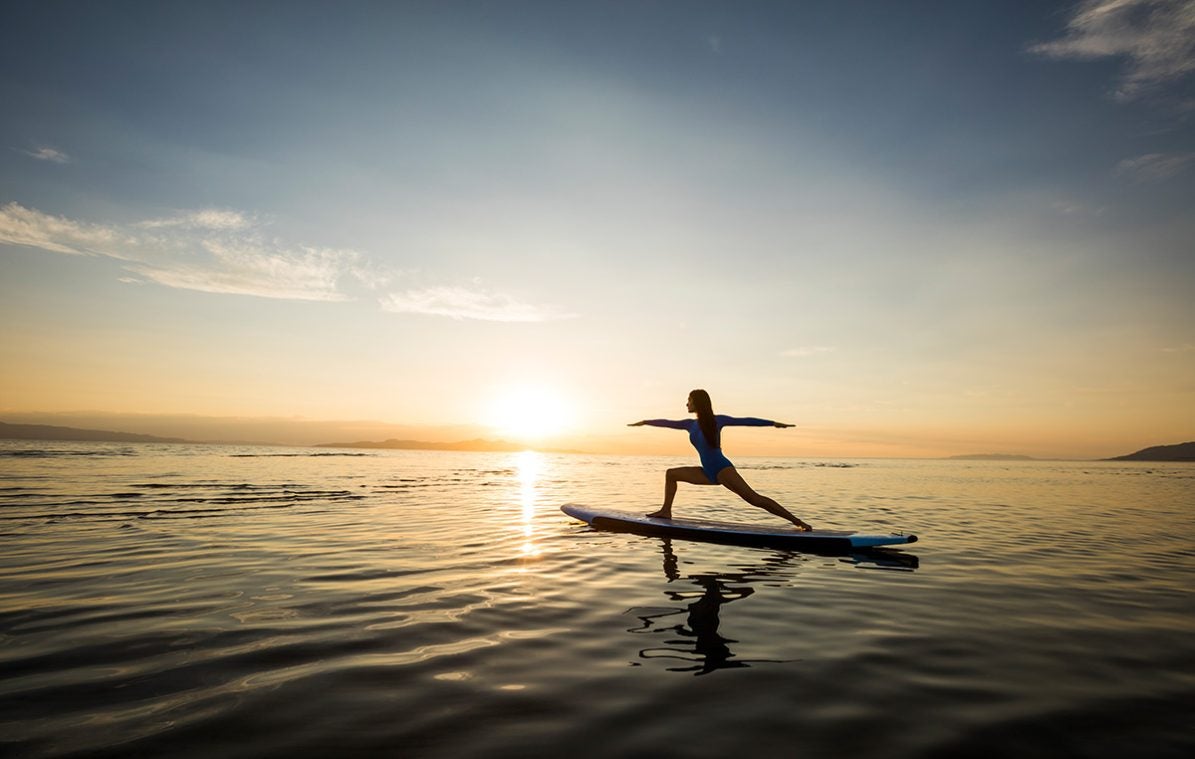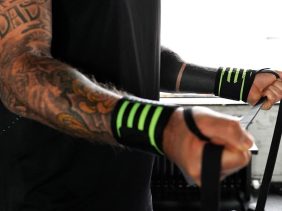SUP yoga? Absolutely! Here’s What You Need to Know
 ©Michael S. Kemp
©Michael S. Kemp
Let’s go back to 2017 in the Caribbean. I was actually there for the diving and was enjoying my morning yoga practice with a sea view as some bonus me-time. But when I learned that SUP yoga was being offered around the corner, I was immediately sold on the idea of “yoga on the sea”. I had never done SUP before – neither my home town of Cologne nor inner-city Berlin are known for their waterfront – although yoga was already an integral part of my life back then.
Sunglasses for SUP yoga? Not a good idea!
So, I signed up and off I went. But what do you actually need for SUP yoga? Sunglasses? Guaranteed to fall into the water. The same goes for your phone and anything else you take. Wet suit? The water in the Caribbean’s far too warm.
A well-fitting sports bikini, waterproof sunscreen (reef safe, of course – environmentally friendly sunscreen that won’t damage coral reefs), drinking water, and a small towel are all you need. In colder waters, I would recommend a wet suit.
A waterproof bag is the best place to keep a change of clothes, sunglasses, and whatever else you want to take with you. We were able to attach our bags to our boards, so it pays to make sure everything’s properly sealed and watertight. SUP schools and SUP rentals usually also have lockers where you can store anything valuable.
My first SUP yoga class. And why you should definitely try it.
Spoiler: it’s not all going to be elegant photos good for Insta in your first SUP yoga class, unless you’re a natural super talent or have plenty of experience with yoga AND SUPs or surfing. If not, your first few attempts are more likely to look a bit cautious or shaky. At least, they did for me and my 5 fellow yogis.
In the second class, however, we were all a lot more confident. But I’d still suggest leaving your phone in that waterproof bag. Or simply enjoying the moment at home, yogi-style. The mini–digital detox session is included free of charge.
#1 SUP – A New Way to Experience Asanas
So here we go: the beginner SUP yoga class starts with an introduction on land. How do you steer the board, how do you get back on if you’ve fallen off, what’s different from yoga on land, and where are we actually going? A short briefing lasts 20-30 minutes, and then we finally head out onto the water. We paddle bravely, one after the other, to the small bay where we get started. Luckily, there are fewer waves in the bay than on the way there.
After a short meditation to give us a feel for the water and the board, and to set the scene for the focus we need, we get started with the first asanas. The sequence is familiar from so many yoga classes: sun salutations, forward bends, twists, back bends, and a closing sequence. I feel at home here – and yet everything is different.
The asanas in our beginner class are quite simple, and we struggle more with the shaky board than the poses. I try to surrender to the unpredictability of this extra element instead of fighting it. The inner resistance that difficult asanas usually cause isn’t an issue here. Once I learned to work with the water instead of against it, the whole thing became one thing above all: fun!
#2 Focus or Fall?
Not least because an enormous amount of focus was required. As soon as my thoughts wandered off, a loud splash would refocus my mind with a vengeance. Practicing on the board with assurance means fully focusing on using all your muscles to balance out the water’s movement, so you (and your center of gravity) stay engaged. Otherwise you’ll quickly find yourself in the water.
#3 Masterclass in Wellness
From a practical perspective, SUP yoga is unbeatable when it comes to stability training. And training on unstable surfaces is known to be the best form of functional training for wellness. All the layers of all your muscles of all sizes are activated, every form of coordination gets a workout, and on top of that, you get fresh air and mental focus. Fun and socializing included! I don’t think it can get any healthier.
#4 Water is Soft
And makes you brave. At least, it did with me. After the first splash, I understood that falling involves much less impact than on normal studio floors (at least most of the time). This gave me the courage to try a few inversions, which I would normally have been more reluctant to face. Learning to do a headstand on the SUP is easy if you’re used to doing headstands. Forearm stands and handstands are another thing altogether.
My tip is to simply jump into the water before the class starts, as seeing how cold it is takes away the fear of falling.
#5 No Place for Ego
But there definitely is for laughter! Preconceptions of what you can do and how you should look don’t belong on the mat anyway. If you take them with you onto the SUP board, they’re guaranteed to take a tumble, along with you. To really practice confidently, you need to be completely at one with yourself (at least as a beginner — maybe that will change). So there’s no room for ego.
#6 Nature Meets Yoga Meets Meditation
This is a welcome change from the typical big city hustle and bustle. The yoga philosophy traditionally encourages people to create an ideal space for their practice with as little distraction as possible. An enclosed space with no wind, noise or other participants’ concentrated focus energy is certainly better suited than a wobbly surface surrounded by nature.
Still, by the end of the first SUP yoga class, peacefully rocking in savasana on the board, I feel both centered and light. The unsteady surface, the sea breeze, the sounds of nature around me create a super feel-good atmosphere of lightness. This may not be the perfect ideal environment for focused practice, bit it has other qualities instead and I feel like I’ve worked hard. I’d definitely recommend experiencing this and engaging with it without reservation.
Conclusion: SUP is super. But so is the mat.
My first SUP lesson was followed by a few more —mostly on vacation, as the city where I live isn’t exactly known for its sandy beaches and ocean bays. There are beautiful lakes all around, but my daily routine as a yoga teacher, fitness trainer, and copywriter means I can only occasionally fit in a long trip to a lake. For me, SUP yoga is and will remain a leisure activity. I might do it more often if there were more opportunities – the combination of water, being outdoors, meditation and asanas is just great fun.
But I prefer a mat and a closed, quiet, focused space for my daily practice. This is not about fun and physical progress, but – to put it simply – a kind of holistic transformation and inner strength. And that doesn’t come from the feel-good program that SUP yoga is (for me, anyway). But it’s great anyway!
More interesting articles from foodspring:
- Stand up paddle yoga: how to transform your flow into an intensive workout
- 7 Things I learned During my Yoga Teacher Training that You Should Start Doing
Sources for this article
We at foodspring use only high-quality sources, including peer-reviewed studies, to support the facts within our articles. Read our editorial policy to learn more about how we fact-check and keep our content accurate, reliable, and trustworthy.






















